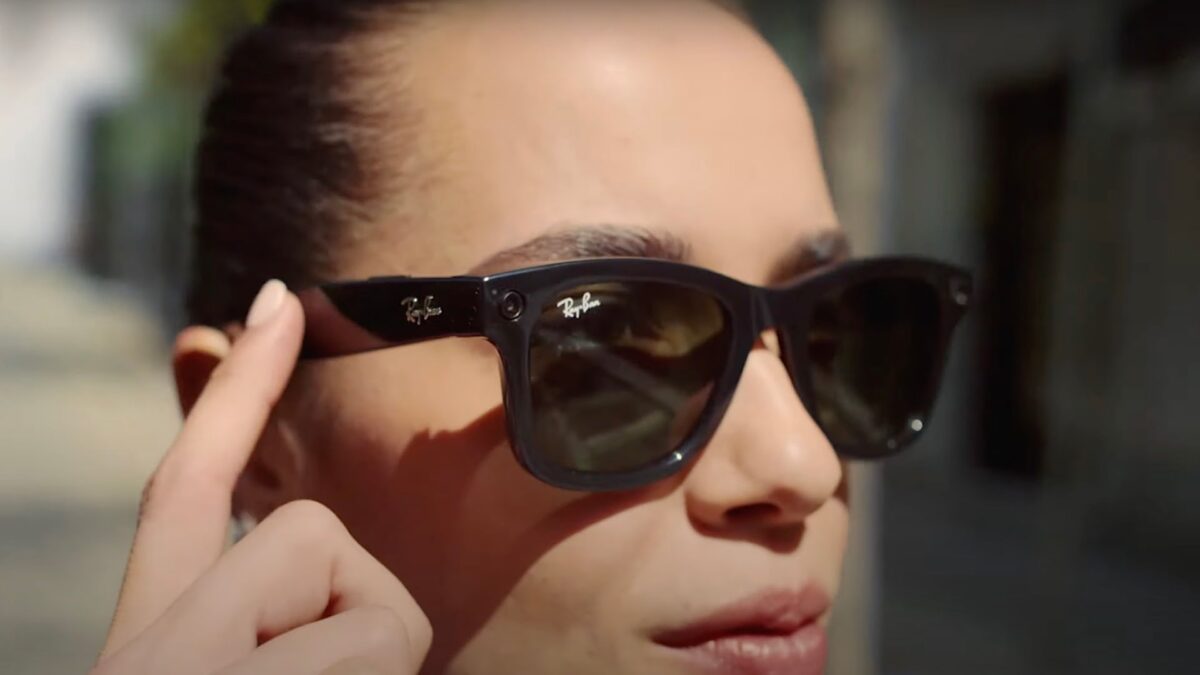Packed with technology: How Meta's Ray-Ban smart glasses were created

Meta loaded its Ray-Ban smart glasses with technical features. In an article, the designers take you through the development process that created Ray-Ban Stories.
The wearable looks like a conventional pair of glasses but can do much more. For example, you can take photos, record movies, listen to music and podcasts, dictate and send messages via Whatsapp and Messenger, and make phone calls.
The technology required for this weighs just 5 grams more. Despite the added electronics, the increased size of the frame and temples is barely noticeable - an impressive technical achievement.
Meta sees the Ray-Ban Stories, which emerged from a collaboration with Ray-Ban parent EssilorLuxottica, as the first step towards AR glasses suitable for everyday use. The wearable launched in September 2021, and a more powerful successor is already in development.
Ray-Ban Stories: The technology follows the design
In a blog post, Meta highlights the development of Ray-Ban Stories and the technical challenges the hardware team faced. The guiding design principle was that the product had to be suitable for everyday use.
"Building cool technology first and then figuring out how to wrap style on top of it was a non-starter. The table stakes were taking a pair of Ray-Ban glasses and figuring out how to build smart glasses technology into it," the article says. The wearable had to look good first and foremost, rather than shine with technical features that made them unsightly.
Because Meta's labs were closed during the pandemic, the engineers had to improvise and set up test stations for hardware designs at home. Test footage using various camera sensors streamed live from China to allow remote development. "Our hardware team never went to China to inspect the factory process, which is unheard of."
Selecting individual components (cameras, speakers, microphones) was extremely difficult because each part came at the expense of another essential aspect, such as space requirements, battery consumption, heat dissipation, and weight.
Technology had to fit into different models
The Ray-Ban Stories has microphones in three locations to capture sounds from near and far. In addition, two virtually invisible cameras are aligned at a special angle to allow natural-looking shots from a viewing perspective. A flexible circuit board in the hinges of the temples is durable enough to withstand 10,000 folds of the glasses.
Another challenge was that the team had to develop multiple models of Ray-Ban Stories with widely varying designs, which came with individual space and design requirements.
"Initially, we tried to architect in such a way that we had flexibility on different styles so that we didn't have to re-engineer every aspect of the product for each style," the article says. "But we also realized we had to make accommodations to account for the different sized frames of different styles, as well as how the different styles would fit into their charging cases."
Note: Links to online stores in articles can be so-called affiliate links. If you buy through this link, MIXED receives a commission from the provider. For you the price does not change.